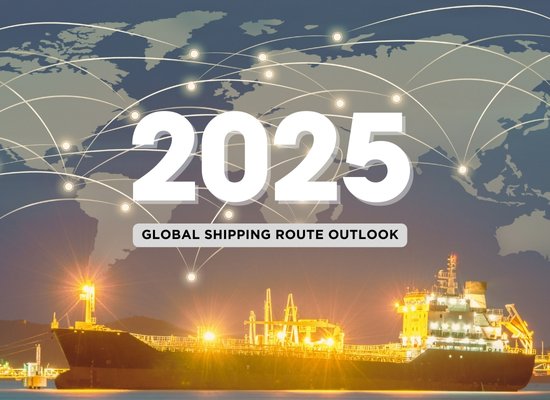Shipping Trends to Watch in Indonesia for 2025

As the world pivots toward digital trade, automation, and green logistics, Indonesia’s shipping industry is undergoing a significant transformation. With its strategic location at the crossroads of the Indian and Pacific Oceans and over 17,000 islands to connect, the country is reshaping how goods are moved both domestically and globally.
By 2025, several macroeconomic factors, government reforms, and technology innovations are set to redefine Indonesia’s shipping sector. Whether you’re an importer, exporter, freight forwarder, or an investor in logistics infrastructure, understanding these trends is essential for gaining a competitive edge.
1. Expansion of Port Infrastructure and Connectivity
Indonesia has been actively modernizing its major ports under the Sea Toll Program (Tol Laut), designed to reduce price disparities between Java and outer islands. In 2025, several key ports such as Tanjung Priok, Tanjung Perak, and Bitung are expected to complete significant upgrades.
-
Tanjung Priok Port in Jakarta is moving toward becoming a fully automated port, increasing cargo handling capacity and reducing vessel waiting times.
-
The upcoming Patimban Port is anticipated to handle a large share of vehicle exports and reduce dependency on Tanjung Priok.
Learn more from the Indonesia Port Corporation (Pelindo).
Implication: Businesses can expect shorter dwell times and better scheduling predictability, especially for automotive, textile, and consumer goods sectors.
2. Surge in E-commerce-Driven Last-Mile Delivery
Indonesia’s e-commerce market is projected to hit USD 82 billion by 2025, according to a Google-Temasek-Bain report. This growth is fueling demand for efficient last-mile logistics, especially in dense urban areas and remote island provinces.
Trends to watch:
-
Same-day delivery in urban hubs like Jakarta, Bandung, and Surabaya.
-
Use of drones and autonomous vehicles for delivery pilots in remote islands.
-
Hyperlocal warehouses and fulfillment centers being set up near major consumer clusters.
Companies such as J&T Express, SiCepat, and Ninja Xpress are investing in AI-based route optimization and real-time delivery tracking systems.
3. Digitalization of the Shipping Industry
Indonesia is fast adopting logistics tech platforms, digital freight forwarding apps, and port community systems (PCS) that allow seamless integration among shippers, customs, and terminal operators.
Key innovations include:
-
e-B/L (electronic Bill of Lading)
-
Smart container tracking via IoT
-
Customs automation through the Indonesia National Single Window (INSW)
Indonesia-Agent.com also offers digital coordination services for product sourcing and vendor management across ports and distribution channels.
4. Increased Focus on Green and Sustainable Shipping
Aligned with the Paris Agreement and its Net-Zero Emissions 2060 goal, Indonesia is pushing for decarbonization in the shipping sector.
Expect to see:
-
Expansion of LNG-powered vessels
-
Green port certifications and eco-friendly dredging policies
-
Greater investment in shore power facilities to reduce port emissions
Companies like Pertamina International Shipping (PIS) are already integrating ESG principles into their maritime operations. Learn more from the Ministry of Transportation (Kemenhub).
5. Stronger Compliance and Trade Regulation Reforms
Indonesia is tightening logistics and customs compliance with improved traceability, documentation requirements, and security protocols to meet international trade norms.
Upcoming trends in 2025:
-
Mandatory digitization of manifests and export documentation.
-
Stricter HS code classifications and risk profiling.
-
More pre-clearance audits for importers.
Foreign companies can benefit from local trade agents who help manage regulatory updates and prevent shipment delays. Read more:
👉 What Foreign Companies Should Know About Logistics Compliance in Indonesia
6. Intermodal Integration: Sea, Rail, and Inland Transport
To reduce logistics costs—which can be as high as 23% of Indonesia’s GDP—the government is promoting intermodal logistics systems.
-
Rail freight integration from ports to inland logistics parks (especially in Java and Sumatra).
-
Growth of dry ports to decongest seaports.
-
Seamless trucking-to-vessel scheduling using integrated software.
Learn more about this growing trend from our post:
👉 Indonesia’s Rail Freight Sector: Is It Gaining Momentum?
7. Smart Warehousing at Major Shipping Hubs
Key ports like Tanjung Priok, Belawan, and Surabaya are seeing a rise in smart warehouse projects with:
-
RFID & barcode automation
-
Warehouse Management Systems (WMS)
-
Real-time inventory dashboards
Foreign and local companies are deploying smart warehouse systems to reduce shrinkage, improve fulfillment speed, and reduce overhead costs.
Explore more on this topic:
👉 The Rise of Smart Warehousing in Indonesia’s Key Ports
Conclusion
Indonesia’s shipping industry in 2025 is a space of tremendous digital, logistical, and regulatory evolution. As the country enhances its maritime and port infrastructure, embraces digital freight tech, and leans into sustainable logistics, foreign and domestic players alike will find fresh opportunities.
To take full advantage of these trends, businesses should:
-
Invest in digital transformation
-
Partner with local agents who understand regulatory frameworks
-
Embrace green shipping practices
-
Integrate with multi-modal networks
Need expert help navigating Indonesia’s logistics market?
📌 Contact Indonesia-Agent.com for shipping coordination, customs compliance, and logistics partner sourcing.
Related Reads